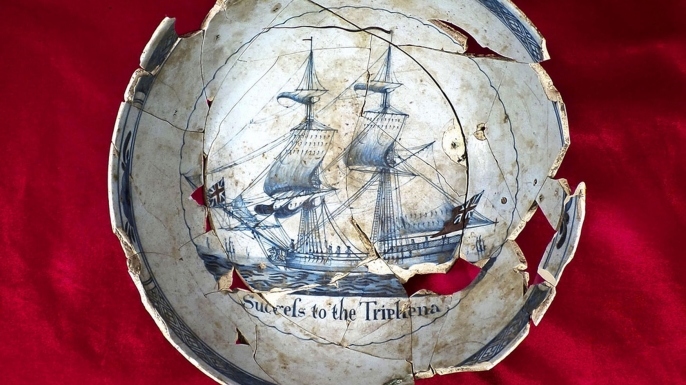While excavating the site of the future Revolutionary War museum in Philadelphia, archaeologists uncovered tens of thousands of historical artifacts. Now, this might seem like a run of the mill story. An archaeologist finds something amazing and now cue the excitement. However, these historians and archaeologists are getting excited over toilets. Yes, you read that correctly. This particular team of archaeologists uncovered an assortment of pottery, drink ware, and wig curlers within privy pits, which are also known as outhouses. These items, although a bit stinky, have been surprisingly well preserved. Archaeologists hope that these items will give them a better insight into the history of Philadelphia starting at the Revolutionary era all the way up to the 19th century.

Photo: History
Beginning in 2014, a team of archaeologists working for the Commonwealth Heritage Group, were working on the site where the Museum of the American Revolution is scheduled to be built. On the corner of South Third and Chestnut Streets, a dozen circular shafts that had been dug in the ground and surrounded by a wall of bricks were found. These structures are similar to a well, yet they did not contain clean water. Instead they were used to dispose of human waste. These holes, which were then known as privy pits are now known as outhouses.
At the time, these privy pits would be used by private residences as well as the surrounding businesses. Since then, these privy pits have been covered up and some were even demolished during the building of Independence Park’s Visitor’s Center in the 1970’s. Archaeologists believe that one of these privies dates back to July 10th, 1776 which was built when Benjamin and Mary Humphrey purchased a home on Carter’s Alley. After examining the Humphrey’s privy pit, they were surprised to find that the privy wasn’t filled with useless trash. However, the pit was filled with an array of drinking tankards, drinking glasses, punch bowls, as well as a variety of liquor bottles. It turns out that in 1783, Mary Humprhrey was arrested for holding a “disorderly house,” which meant that illegal prostitutes and their clientele would frequent this home that was being used as a tavern.

Photo: History
More interesting artifacts were found inside the pits that were placed along Carter’s Alley. One being a piece of glass that had the word “love” etched into it. Later the team found another piece of broken glass that had the inscription “We admire riches, And are in love with i[delness],” etched onto it. This particular quote comes from the ancient Roman senator, Cato the Younger, who appears in the 18th-century play about Julius Caesar. This particular play would have been well renowned during the Revolutionary era.
The list of amazing artifacts continues on. The team of archaeologists also discovered a rare punchbowl (pictured below). The bowl has been broken into pieces, but archaeologists were able to piece it back together. This blue and white bowl shows a picture of the Tryphena, which was a brigantine ship that carried colonists’ Stamp Act petition from Philadelphia to Liverpool in 1765. Below the ship, the punchbowl is inscribed with the phrase, “Success to the Triphena.”
Within the 12 different privy pits, the team of archaeologists cataloged 82,000 artifacts. Most of these artifacts date back to the American Revolution, however, some date between 1775 and 1783. Oddly enough, these valuable artifacts were preserved by centuries of human waste. Michael Quinn, the president and CEO of the new museum spoke out about this new discovery, “These artifacts provide a tangible tie to Philadelphia’s past and help us tell the stories of people who lived right her before, during, and after the Revolutionary War.” A small selection of these artifacts will go on display at the Museum of the American Revolution. The museum is scheduled to open in April 2017.


